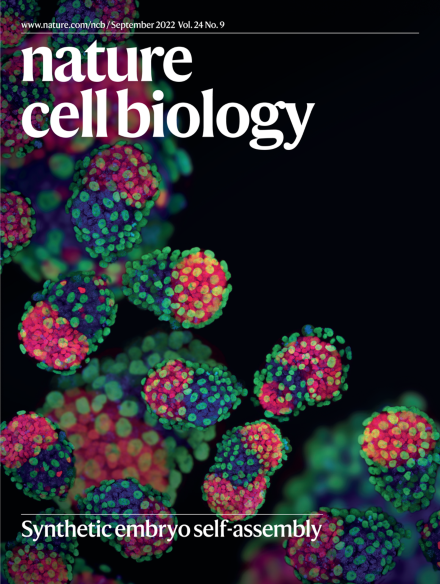Coupling of cell shape, matrix and tissue dynamics ensures embryonic patterning robustness
IF 17.3
1区 生物学
Q1 CELL BIOLOGY
引用次数: 0
Abstract
Tissue patterning coordinates morphogenesis, cell dynamics and fate specification. Understanding how precision in patterning is robustly achieved despite inherent developmental variability during mammalian embryogenesis remains a challenge. Here, based on cell dynamics quantification and simulation, we show how salt-and-pepper epiblast and primitive endoderm (PrE) cells pattern the inner cell mass of mouse blastocysts. Coupling cell fate and dynamics, PrE cells form apical polarity-dependent actin protrusions required for RAC1-dependent migration towards the surface of the fluid cavity, where PrE cells are trapped due to decreased tension. Concomitantly, PrE cells deposit an extracellular matrix gradient, presumably breaking the tissue-level symmetry and collectively guiding their own migration. Tissue size perturbations of mouse embryos and their comparison with monkey and human blastocysts further demonstrate that the fixed proportion of PrE/epiblast cells is optimal with respect to embryo size and tissue geometry and, despite variability, ensures patterning robustness during early mammalian development. Moghe et al. show that mouse embryonic primitive endoderm cells migrate towards the inner cell mass-cavity interface, depositing an extracellular matrix gradient that may guide migration. Primitive endoderm to epiblast ratios may enable robust patterning across embryos and sizes.


求助全文
约1分钟内获得全文
求助全文
来源期刊

Nature Cell Biology
生物-细胞生物学
CiteScore
28.40
自引率
0.90%
发文量
219
审稿时长
3 months
期刊介绍:
Nature Cell Biology, a prestigious journal, upholds a commitment to publishing papers of the highest quality across all areas of cell biology, with a particular focus on elucidating mechanisms underlying fundamental cell biological processes. The journal's broad scope encompasses various areas of interest, including but not limited to:
-Autophagy
-Cancer biology
-Cell adhesion and migration
-Cell cycle and growth
-Cell death
-Chromatin and epigenetics
-Cytoskeletal dynamics
-Developmental biology
-DNA replication and repair
-Mechanisms of human disease
-Mechanobiology
-Membrane traffic and dynamics
-Metabolism
-Nuclear organization and dynamics
-Organelle biology
-Proteolysis and quality control
-RNA biology
-Signal transduction
-Stem cell biology
 求助内容:
求助内容: 应助结果提醒方式:
应助结果提醒方式:


